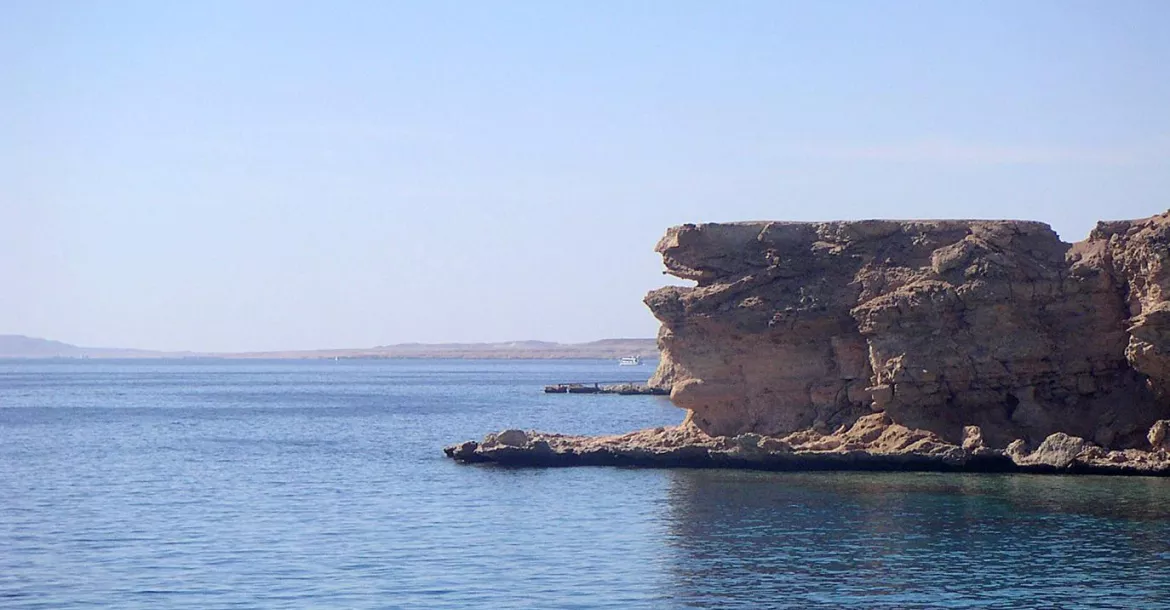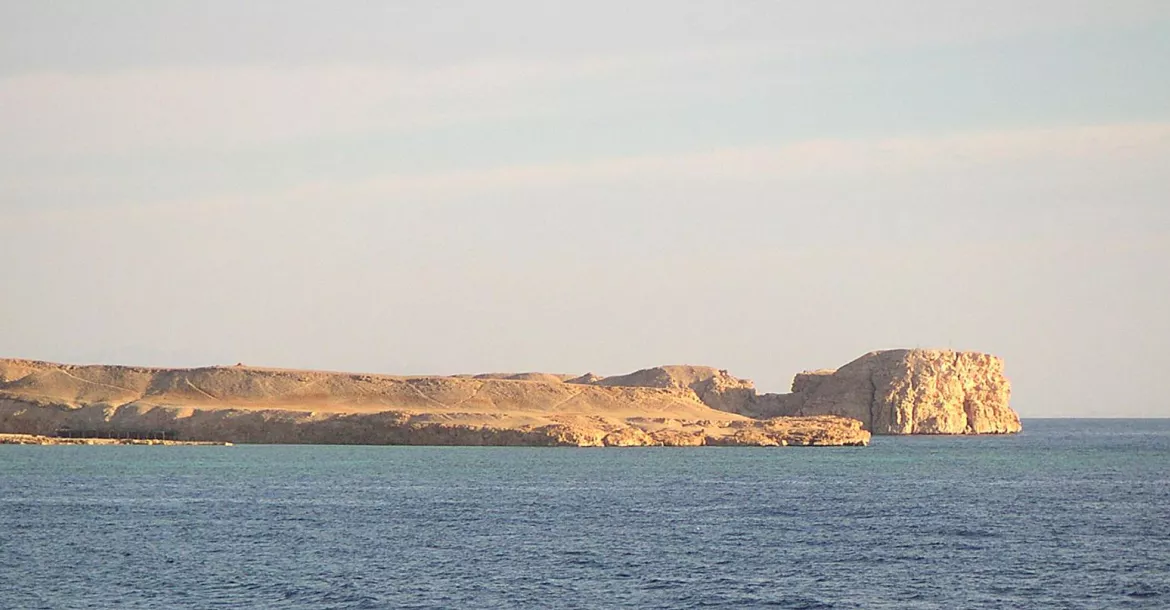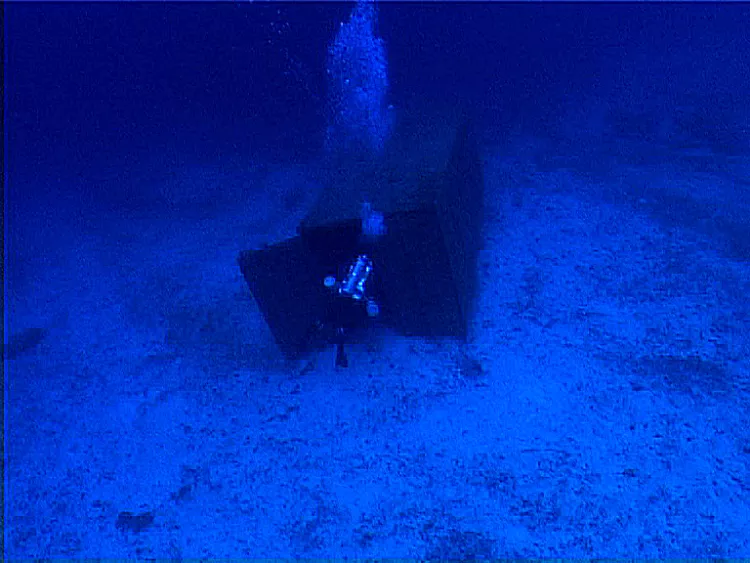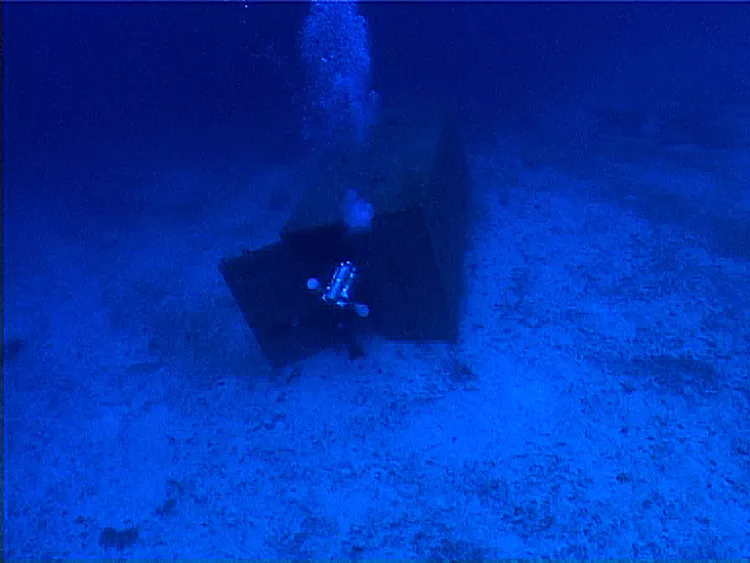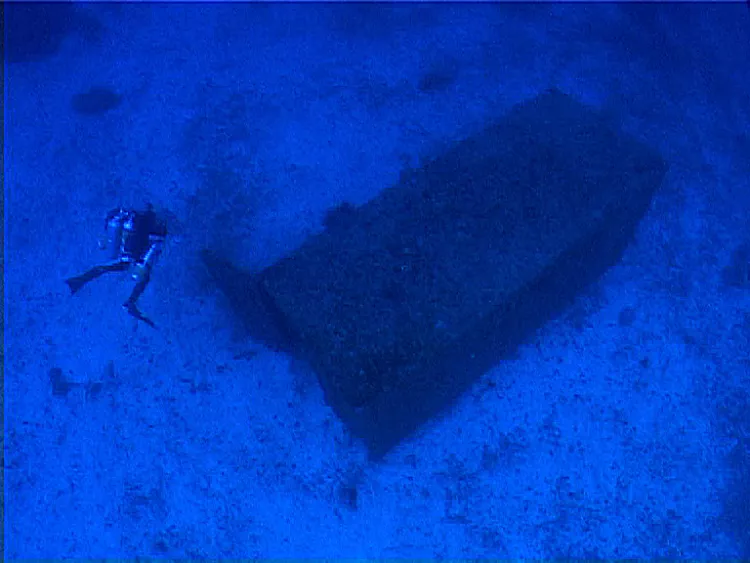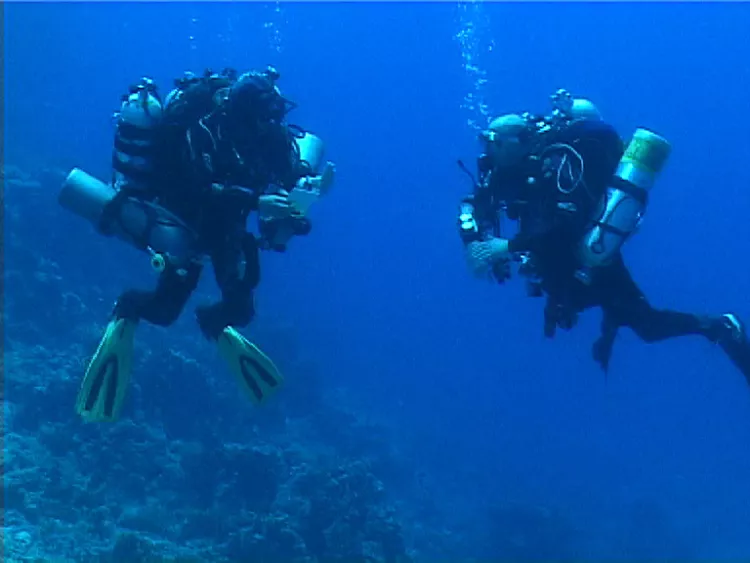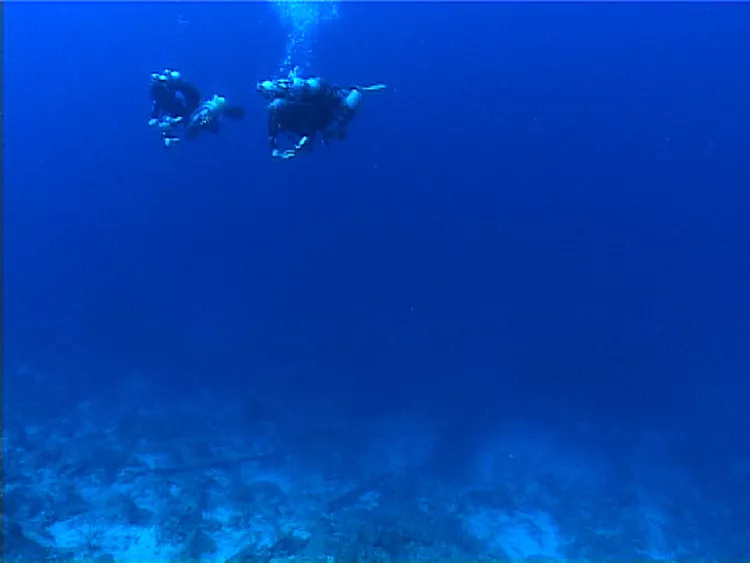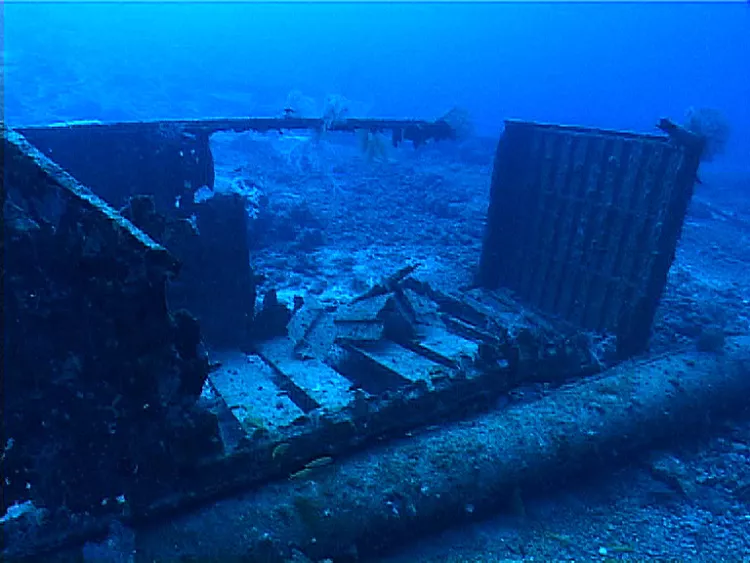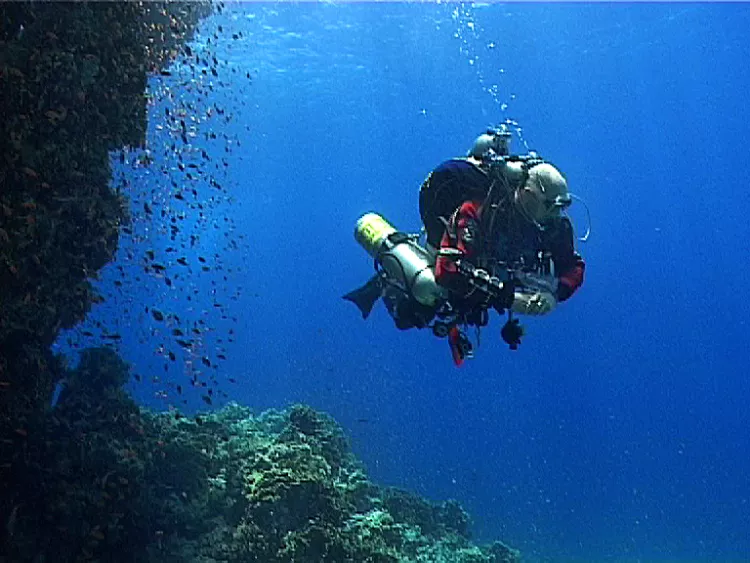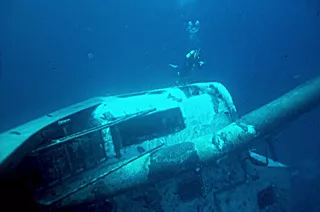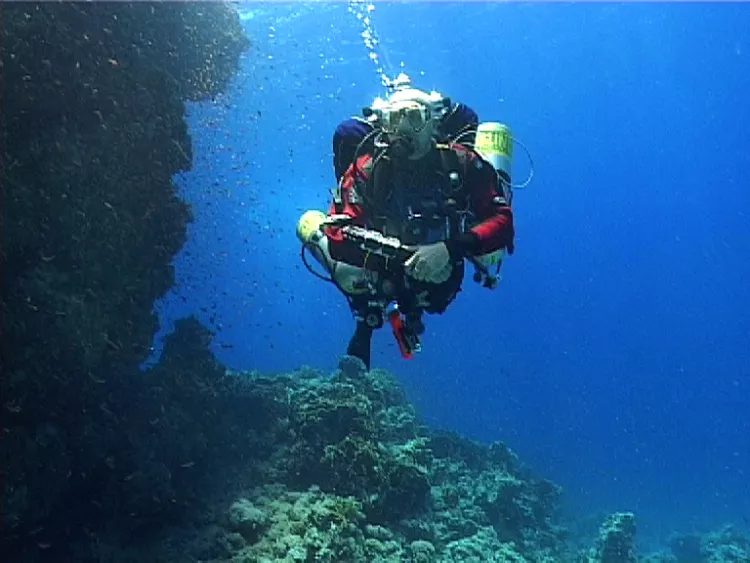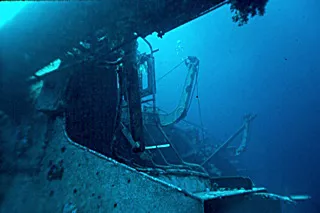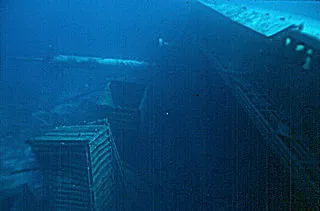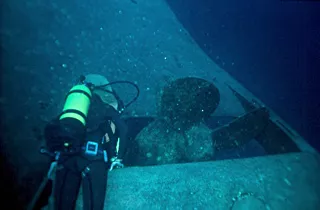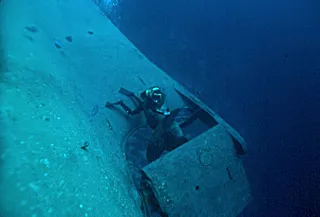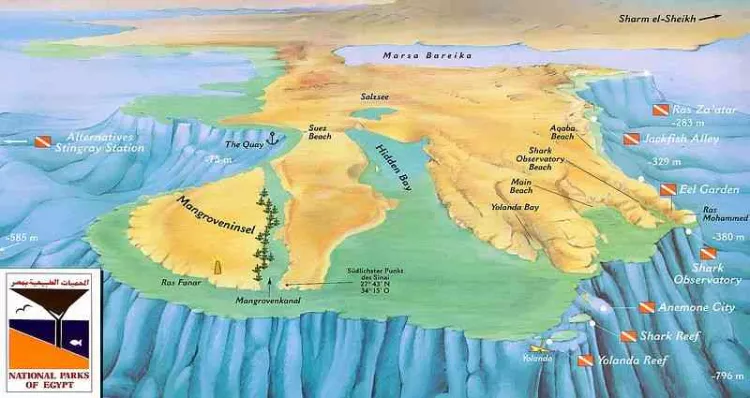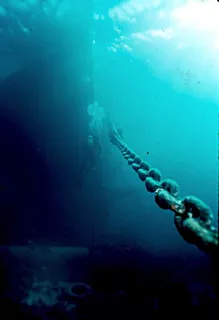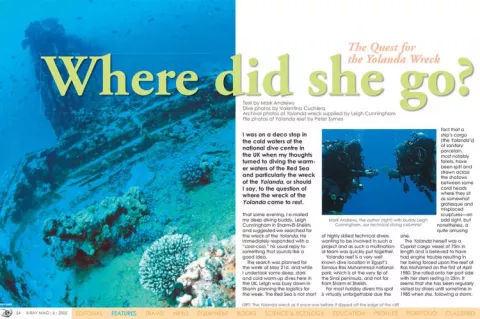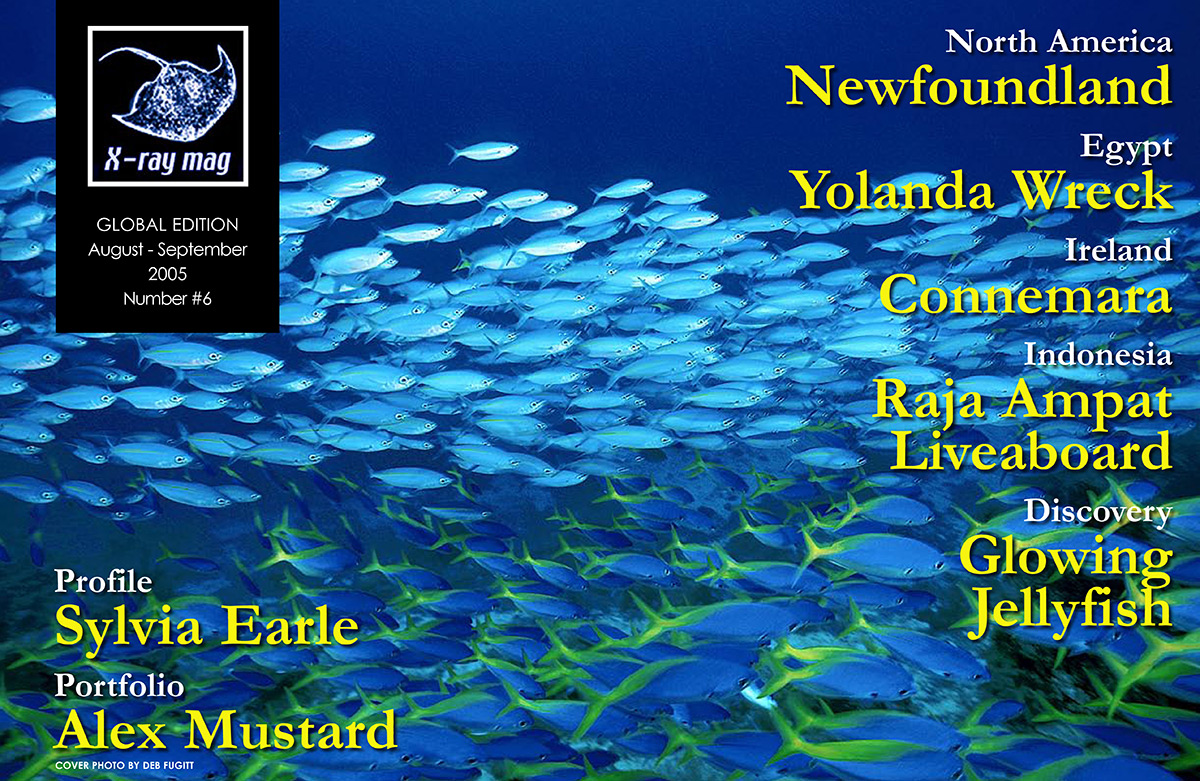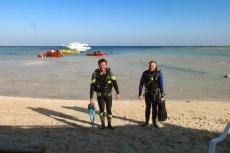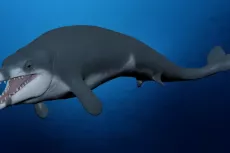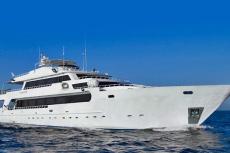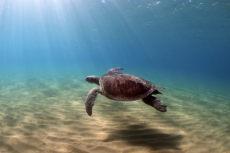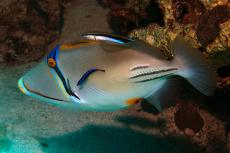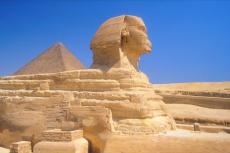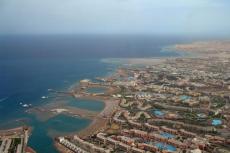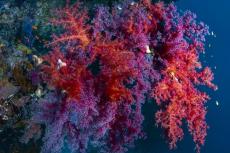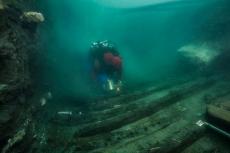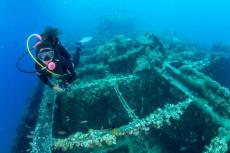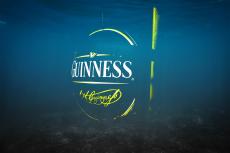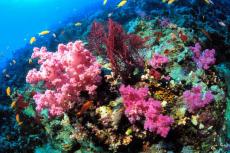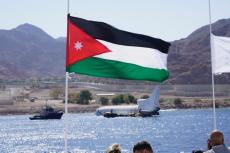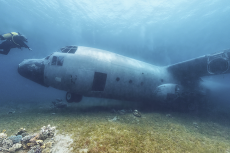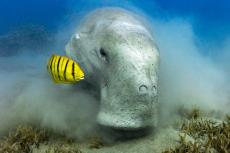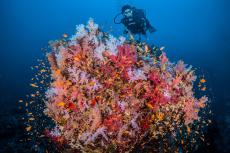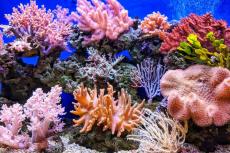I was on a deco stop in the cold waters of the national dive centre in the UK when my thoughts turned to diving the warmer waters of the Red Sea and particularly the wreck of the Yolanda, or should I say, to the question of where the wreck of the Yolanda came to rest.
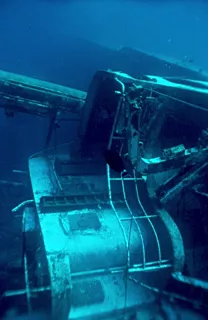
That same evening, I e-mailed my deep diving buddy, Leigh Cunningham in Sharm-El-Sheikh, and suggested we searched for the wreck of the Yolanda. He immediately responded with a “cool-cool,” his usual reply to something that sounds like a good idea.
The search was planned for the week of May 21st, and while I undertook some deep, dark and cold warm-up dives here in the UK, Leigh was busy down in Sharm planning the logistics for the week. The Red Sea is not short of highly skilled technical divers wanting to be involved in such a project and as such a multinational team was quickly put together.
Yolanda reef is a very well known dive location in Egypt’s famous Ras Muhammad national park, which is at the very tip of the Sinai peninsula, and not far from Sharm el Sheikh.
For most holiday divers this spot is virtually unforgettable due the fact that a ship’s cargo (the Yolanda’s) of sanitary porcelain, most notably toilets, have been spilt and strewn across the shallows between some coral heads where they sit as somewhat grotesque and misplaced sculptures—an odd sight, but nonetheless, a quite amusing one.
The Yolanda herself was a Cypriot cargo vessel of 75m in length and is believed to have had engine trouble resulting in her being forced upon the reef at Ras Mohamed on the first of April 1980. She rolled onto her port side with her stern resting in 25m. It seems that she has been regularly visited by divers until sometime in 1985 when she, following a storm, slid off the reef and down into the abyss never to be seen again.
The plan
The plan for the weeks of diving was to spend the first two days preparing the equipment and generally getting comfortable at depth with the dive rigs.
On Sunday, the 22nd, both Leigh and I made up our dive rigs. Leigh’s rig was a 12L twin set with a single 12L strapped to either side of the twins. Added to this were a further two 12L tanks carried as stage cylinders making up his familiar six-tank rig. My own dive rig consisted of a 12L triple set and two 12L stage tanks—a dive rig that I often use in UK waters.
Our main problem with these large dive rigs is that the profile they offer in the water results in a need for substantial amounts of lead both in order to enable us to leave the surface in the first place, and, more importantly—due to the positive buoyancy of empty alloy cylinders—to enable us to remain at our shallow decompression stops without being dragged towards the surface.
Once we were weighted correctly, we made an 80m check dive at a local dive site, Ras Katy. The dive went perfectly, and we were both happy with the dive rigs and the weight. Monday the 23rd saw the team at another local dive site, Far Garden.
This time we planned to go a little deeper, and we were both shocked to discover a wall at a depth of 100m. As we swam along the edge, we looked at each other with a knowing thought that the other was also wanting desperately to go over the edge and check it out! However, at this stage, we both simultaneously gave the up signal and reluctantly headed back up the slope toward the reef wall.
Once on the boat, we couldn’t get our gear off quickly enough to begin talking about the drop off and how it must be a dive for the future.
Tuesday 24th saw us out at Yolanda reef, the site of our goal. Yolanda reef is a very busy dive site with many hundreds of recreational divers spilling from dozens of day boats all over the reef like a swarm of bees to a honey pot. We stationed the Colona dive boat away from the crowds and the ever present long swell to kit up in comfort. We decided to hit the water around 12:00 pm, which is when most of the recreational divers return to their day boats for lunch.
Leigh and I would each be accompanied by two safety divers and a videographer, who in turn each have their own safety diver. Getting everyone ready for such a dive can be a logistical nightmare and is the sole responsibility of the dive co-ordinator. In our case, we were fortunate to have Doozer, a well seasoned and experienced organiser of deep dives as well as an accomplished deep diver himself.
The preparation for the dive was run with military precision, as on this dive site we did not have the luxury of a mooring and had to rely on all the support divers to be ready to jump on the given signal by the skipper, Yassir, who skilfully manoeuvered the Colona boat into position some 100m away from the reef to assure us a deep water drop. The count down began, and each team made their way to the back of the boat where Leigh sat on the dive platform in full kit, exposed to the scorching sun in his O’three dry suit. As I am a lot more susceptible to the heat, I positioned myself just behind him, also fully kitted up in a drysuit and swamped with dive tanks.
Yassir, the skipper, sounded the horn, which was the signal to jump, and the back of the dive boat erupted into action with heavily equipped divers entering the water on Doozer’s signal.
Leigh and I followed shortly and were immediately met by our support team who proceeded to make the all-important bubble check on our dive rigs. Once completed, Leigh and I gave the descend signal and vented the air from our wings. We slowly slipped into the silent liquid world. We both feel more at home here than in the noisy hustle and bustle on dry land.
The sea was warm and clear as we descended into the dark blue waters past shoals of inquisitive fish. We descended roughly 30m apart and occasionally gave each other the okay signal to show that all was well. As I looked down from 40m, I could see the wall in front of me some 50m away and a sandy bottom in the depths below.
The bottom came rushing up towards me at 50m per minute and we slowly pulsed air into the wings to bring ourselves to a halt just short of the bottom.
The Wreck
As I turned, I immediately saw a large intact ship’s container. I couldn’t believe that we had dropped directly onto the wreckage, and as I looked further down the slope I began to see more and more wreckage.
Leigh headed off to the left of the container, while I swam inside to take a look. This first container was at a depth of 73m and was completely intact with one door open but empty of all cargo.
I exited the container to find Leigh some distance down the slope in deeper water, so I decided to head off to the right and explore a separate area. I quickly came across a large scour in the seabed heading off into the dark area below me. I came across a further container this time, broken up at 86m and surrounded by wreckage of various shapes and sizes.
Ascent
I ascended slowly up the sandy slope and met one of my safety divers and gave him the okay signal that all was well with me.
As I ascended, I was also met by one of the videographers. We came across a very large Danforth anchor at 63m and a hospital stretcher at 55m along with some very large batteries.
After completing the majority of the decompression schedule, I bumped into Leigh and his safety divers at 15m on the reef wall where we compared our dive slates.
Leigh had been to 100m but slightly to the left of where I dived. He had come across a large metal plate with a rope attached that ascended to who knows how far, but not much else in the way of wreckage. He had, however, seen a further drop off which began at 110m and quickly dropped away at almost a 45 degree angle.
We completed our decompression stops around the remainder of Yolanda’s cargo, which most Red Sea divers have visited at some time. It consists of toilets, washbasins and bath tubs scattered along the reef amongst parts of the ship’s superstructure.
The decompression was complete after 90 minutes, and both Leigh and myself surfaced with our respective safety divers. Yassir, the skipper of the Colona dive boat, again masterfully manoeuvered the large dive boat stern towards us for an effortless pick up.
The safety teams, well-versed in removing our large dive rigs in the water, handed up our rigs piece by piece to the ever-ready boat crew and surface support team.
The post-dive de-brief was full of excitement and amazement of just how much wreckage there was down there. Each team member gave an account of the items they saw and the depths they recorded. We were very quickly able to draw a rough map of wreck debris. From this rendering, an obvious path of the main wreck soon emerged.
Wednesday 25th saw the team return to the site of the wreckage minus myself who was now laid up in bed with stomach cramps from the local Egyptian cuisine.
While I spent the day backside on the toilet and head in the sink the dive team was busy preparing for another adventure.
Leigh decided to make a dive to 115m and follow the deep scour in the seabed.
Grim reminder
As Leigh descended, he noticed that he had dropped too far to the right of the scour, and as such, needed to make a substantial effort to swim his large dive rig in the direction of the wreckage.
Approaching his bottom time, he found himself at target depth looking over a steep slope. Leigh stared hard into the darkness below willing his eyes to make out some form of recognisable shape, but what appeared below, although recognisable, was definitely not a shipwreck. As Leigh’s eyes focused on the object 20-30m below him, the shape of a human figure emerged.
The body of a diver lying on the sandy bottom at a depth of around 130m was a stark reminder of what can happen when things go wrong.
Leigh’s ascent and decompression time passed by without incident, accompanied by the usual entertainment provided by the local dive guides who were herding customers along the reef edge like sheep.
Thursday 26th After spending 28 hours in bed, I returned to the dive boat. I was unable to dive, but I would rather be ill and with company than spend another day staring at the green walls in my hotel room. This was to be the first mix dive of the project with a planned depth of 150m.
The problem here would be hitting the depth within the planned run time. All the dives are being made as free descent and ascent. No shot line is used due to the fact that we do not know where the wreck rests and have no access to echo sounders. Besides, this part of Ras Mohamed is also one of the busiest dive sites in the area, and as such, shot lines and large buoys are not a viable option.
We rely entirely on the information gathered from previous dives to determine the drop site and the skill of the skipper to place us right on the mark.
Bull’s eye
Once Leigh and the team were ready, the boat positioned and the horn sounded, the divers hit the water at 11:00 am. Leigh descended into the blue.
He found himself descending too far to the right of the scour and decided to head out into the blue before hitting the slope, this would be the only way to assure obtaining the depth required. Concentrating on swimming, he took in very little of the surrounding sea bed. Then, he reached 150m with 1 minute to spare on his run time.
Focusing his eyes to the dimmed ambient light, he scanned the sea bed below for any signs of wreckage but could see nothing until he turned to his right and noticed a crack in the sea bed with two different levels. Thinking this was bizarre, Leigh took a closer look and noticed a number of metal protrusions emerging from the sand. The more he looked, the more it became obvious that this was in fact the wreck of the Yolanda.
Time to go had come around all too soon, and Leigh had to start his 103 minute ascent to the surface looking on the way back for any signs of the body sighted on the previous day’s dive, but it was no longer there. The decompression schedule went without complication, and he emerged safely from the water with the good news that the Yolanda was truly re-discovered.
An amazing facility
That evening, the team met up at Rawasett to undertake the important task of gas blending for the following day. The facility provided for the project was Mix unlimited run by Chad Clark. It is the most amazing gas blending facility I have ever laid eyes on. It consists of two membrane compressors pumping out a constant flow of Nitrox 32 and four air compressors.
Also contained in this one unit is a Trimix blending panel along with Haskell booster pumps. The crème de la crème comes in the form of a military specification oxygen generator that can turn normal air into oxygen.
With the blending complete, the team headed off for a good night’s sleep to be ready for the next day’s dive, which was planned for a depth of 160m. I, on the other hand, ended up at the doctor’s office and was diagnosed with severe gastroenteritis. What a week of torture I was having, listening to Leigh talk about the wreck brimming with excitement and all the time looking at my dive rig bone dry on the back of the deck.
Safety first
Friday 27th, the team assembled on the Colona dive boat as usual and started assembling dive kits. The boat motored out toward Yolanda reef on a calm blue sea. The excitement mounted as the reef drew nearer.
As Leigh prepared to enter the water, the search and rescue team boat (SAR) appeared on scene to provide medical safety cover and fast evacuation in case of an emergency. This was backed up with doctors Adell and Ahmed back at Travco in the Chamber facility.
We had provided them with a copy of the gasses used and the dive plan so as to be sure, in the case of an emergency, the appropriate treatment would be administered quickly. Nothing on this project, or any of the other deep dives we undertake, are left to chance.
Leigh entered the water shortly after his safety divers, and it was instantly apparent that a strong current existed along the reef. Leigh made an instant decision and began his descent. His safety team followed in hot pursuit and positioned themselves at their predetermined depths to wait for his return.
As he descended, Leigh could see that this was a better drop than the previous one and descended straight into 130m of water. After getting his bearings, he swam down and along the reef at a depth of 160m. Slowly, the wreck came into view and he was able to settle on the wreckage and take a good look around.
Wreck check
The wreck itself is almost completely buried in the sand with very little remaining above the sea bed except some of the twisted superstructure and, off to the left, the crows nest. Below, on the slope, lies scattered poles similar to those we had seen in the shallow water whilst decompressing.
The visibility was almost infinite and the ambient light enough not to require a dive light. Leigh looked up the slope and could easily see the ship’s path down to her deep-water resting place. He could see the outline of the deepest container at 86m—some 74m shallower!
The time to leave came around all too soon. The12 minute leave time and a push on the wing inflator saw the beginning of the ascent and almost 2 hours of decompression.
Bang on time, the surface support team spotted the DSMB (Delayed Surface Marker Buoy , ed.) on the surface, but out in the blue and not on the reef as expected. Due to the strong current, Leigh had been unable to reach the reef wall and was forced to make a blue water ascent.
The next shift of safety divers were already kitted up on the back of the boat when the DSMB surfaced and were dropped right on top descending down to spend the rest of the decompression time with him should he want for anything like spare gas.
The decompression went without a hitch and two hours after entering the water, he surfaced with the safety divers and film crew to be met by the SAR team to make sure all was well before they departed back to their base quarters.
On deck, we drew out the new information on to our rough sketch and discussed the next phase of the project.
The next step
We will be returning to the Yolanda in August to film her stern to bow and survey the wreck to try and capture her demise as best we can. The condition that she was found in was surprising to us all and definitely warrants further investigation. ■
Published in
-
X-Ray Mag #6
- Read more about X-Ray Mag #6
- Log in to post comments

